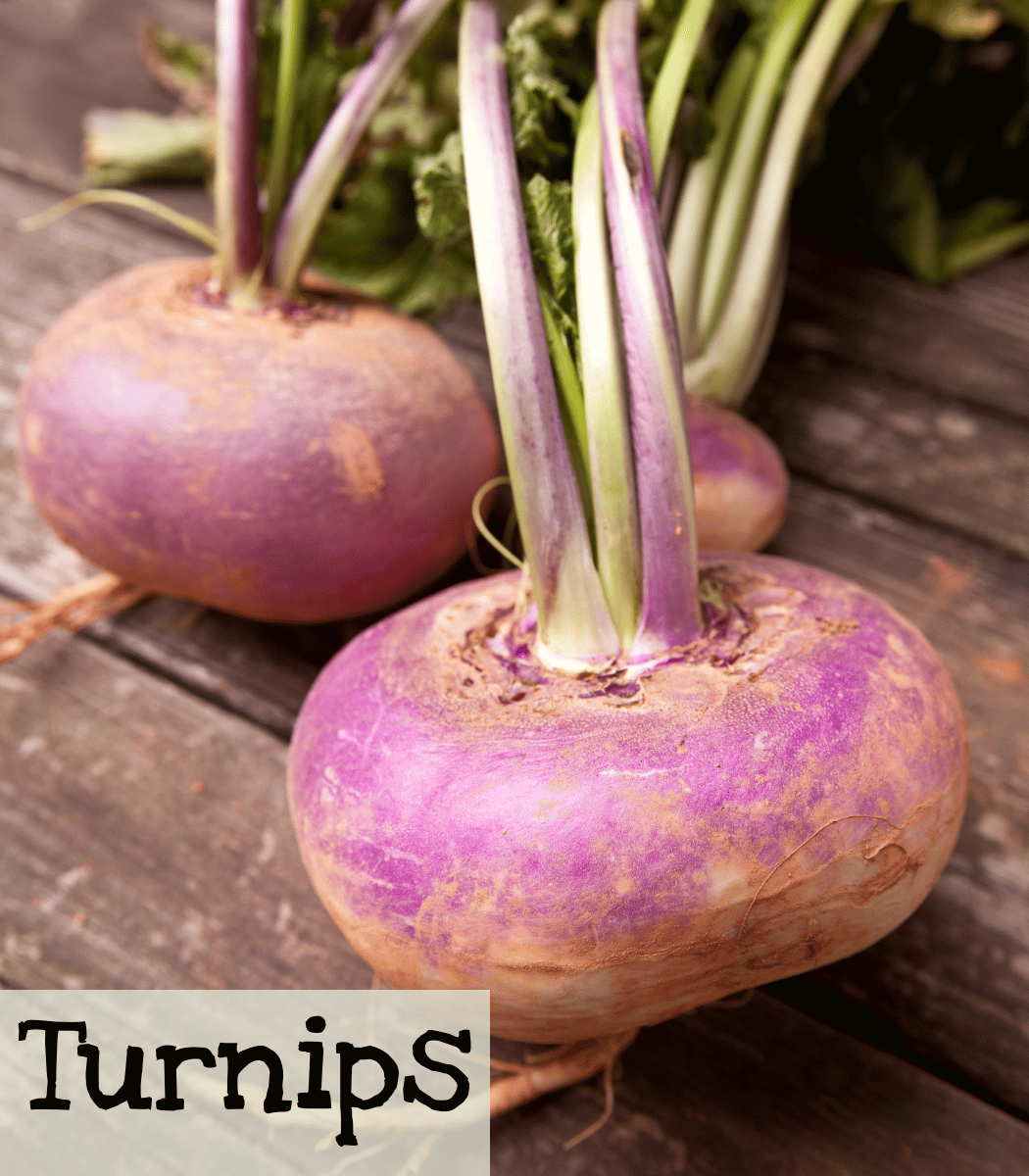
Turnip
This root vegetable is in the brassica family. Young leaves are good in salads the root can be eaten raw or cooked. Turnip is many times sliced thinly for salads, roasted, or cooked in stews.
|
Scarlet Ohno Revival |
|
Brassica rapa |
|
Easy |
|
Intermediate |
|
4-5 years if properly stored |
|
Biennial |
|
5-14 days |
|
None |
|
1/2 inch |
|
12-22” high x 12-15” spread |
|
Full sun but will tolerate part shade |
|
30-55 days |
|
bulb size 1-3” greens 12” |
|
February and August |
|
No |

Growing Tips


12+ inch container
When to Start
Winter/Spring: Direct sow in late winter to early spring. (Jan 15-Apr 1 for GA)
Fall: Direct sow in late summer. (Aug 10-Sep 15 for GA)
How to Start
Turnips generally require a full sun location but will tolerate partial shade, especially if you plan on harvesting the plant for its greens. Prepare the bed by loosening the soil with a rake. Direct sow to 1/2 inch deep. Water immediately after planting to speed germination.
Care
Turnips like loose, well-draining soil. Plant them in full sun. Once you find your turnips growing, thin the plants to about 4 inches apart to give the plants plenty of room to form good roots. Use succession planting to have a more continual harvest. Plant every ten-days. Keep the soil moist but not soggy. Otherwise, turnips are relatively low maintenance.
Harvest
After 45-50 days pull a turnip to see if it’s ready for harvest. Start harvesting turnips once you find a mature turnip (2-3 inch bulbs).
Greens can be harvested from rooting varieties once the roots develop. This will, however, slow root maturity. If growing a variety that is just for greens (no bulb root), they can be harvested once the leaves reach a decent size (12 inches or so). Young leaves are sweeter.
Spring turnips are more tender. Fall turnips produce a hardier variety that stores well in a cool, dry place and can be used throughout the winter.
Seed Saving

Isolation Distance
Insect-dependent and biennial, turnips will cross with other Brassica rapa like cabbage as well as other turnip varieties. Separate by 1 mile for reliable distance isolation. Allow seeds to mature and dry on the plants before harvesting.
Instructions
Select the plants to allow to go to seed. Allow seeds to dry on the plant before harvesting.
Store them in a dry place and wait until they are thoroughly dry.
Seeds and finer chaff are easy to separate by a variety of methods. One way is to use two screens of varying mesh, one a little smaller than the seeds and the other a little larger. The first screen lets anything smaller than the seeds fall through, and the second lets the seeds through and stops anything larger.
Features
- Scarlet Ohno Revival: Scarlet-skinned turnips, some round, some flattened. Crunchy and good for pickling.

- Turnips are biennial and will bloom in the second year.
- Harvest seven top greens while the leaves are still young and tender around 12” or smaller.
Sources:
Starting & Saving Seeds By Julie Thompson-Adolf
